Human Cities/SMOTIES
Creative works with small and remote places
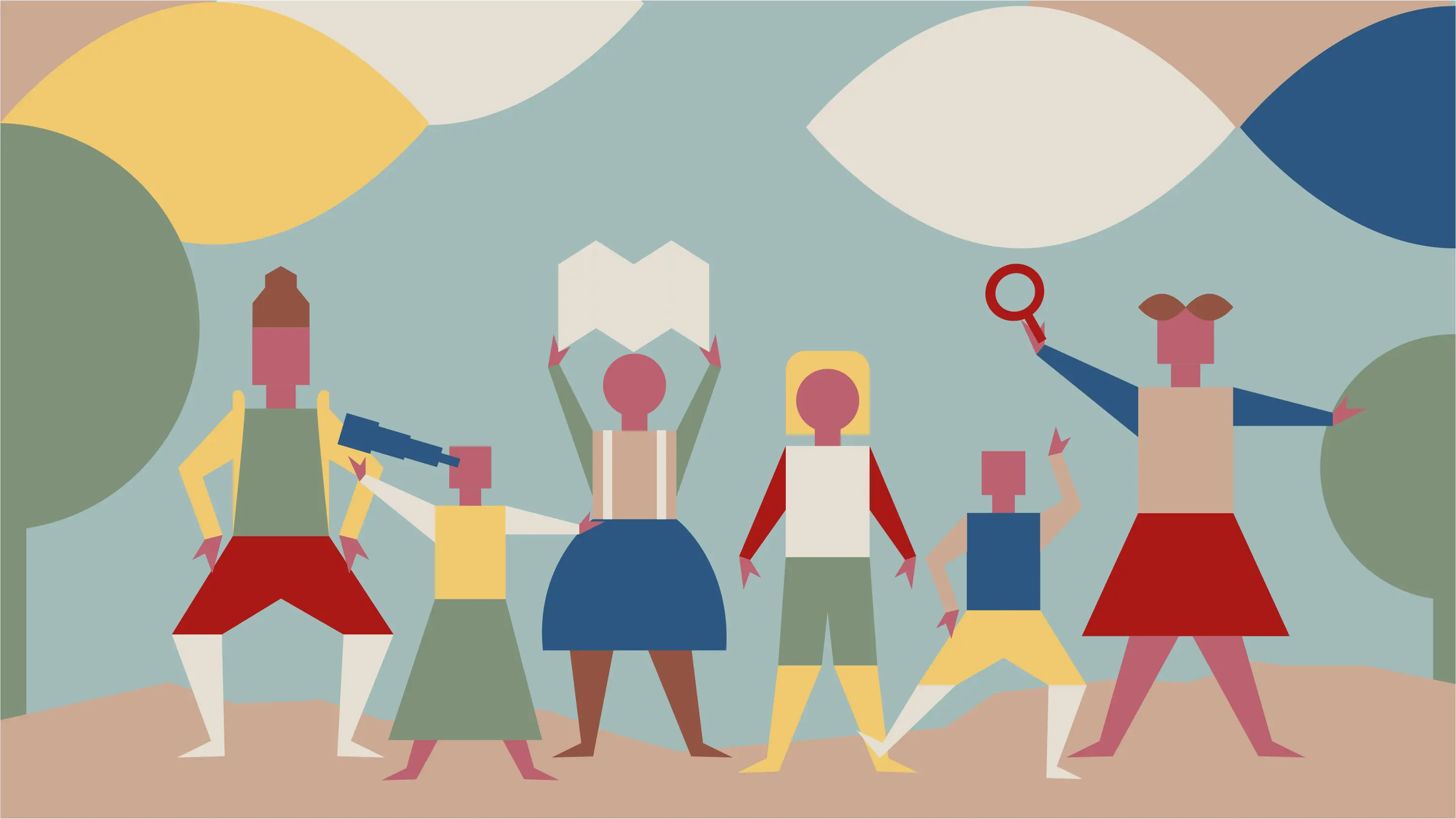
Human Cities / SMOTIES: Creative works with small and remote places is a research project co-funded by the European Union under the Creative Europe program. The project involves institutions, associations, and the citizens of ten small and remote European locations, which hold a little-known tangible and intangible cultural heritage that is at risk of being forgotten.
This project is part of Human Cities, an interdisciplinary platform founded in 2006 and composed of a network of European partners. Human Cities explores new ways of designing public spaces and local services through the active participation of residents and local stakeholders.
With POLIMI DESIS Lab — a research group from the Department of Design — as the coordinator, the network is composed of 10 partners, hubs of creativity in 10 European cities:
- Clear Village (London, UK)
- FH Joanneum, University of Applied Sciences (Graz, Austria)
- Cité du Design (Saint-Etienne, France)
- University of Madeira (Funchal, Madeira, Portugal)
- University of the Aegean (Ermoupoli, Syros, Greece)
- Urban Planning Institute of the Republic of Slovenia (Ljubljana, Slovenia)
- Estonian Association of Designers (Tallinn, Estonia)
- Alternance SLF (Reykjavik, Iceland)
- Zamek Cieszyn (Cieszyn, Poland)
Objectives and activities
Researchers and designers from the SMOTIES network collaborated with the local communities of the ten small and remote locations. The residents, associations, and local administrations jointly designed innovative public spaces and services, as well as inclusive strategies aimed at enhancing the specificities of the territory. These initiatives aimed to make these areas more attractive, stimulate the local economy, and strengthen their cultural identity.
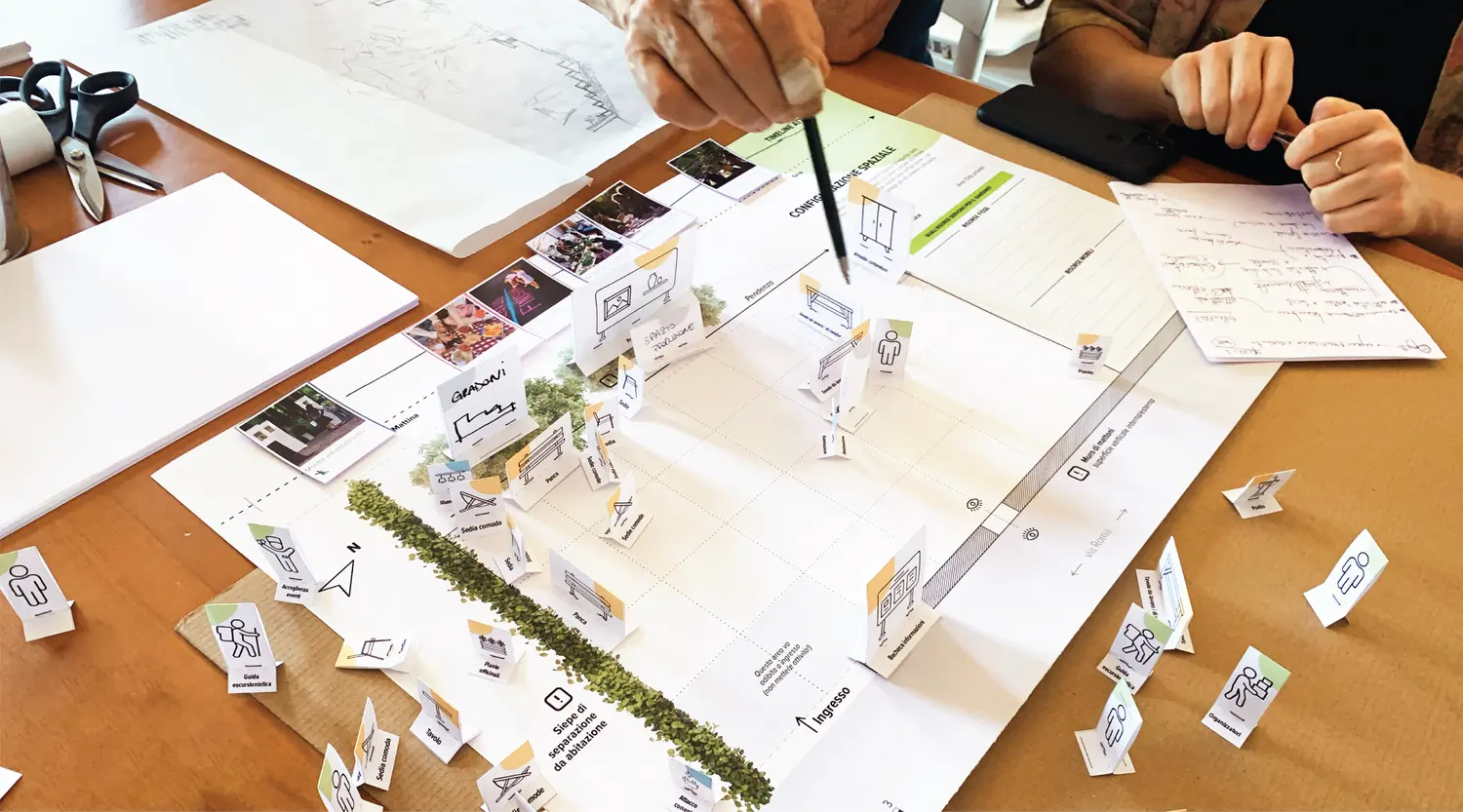
In this context, the Department of Design collaborated with stakeholders in the Basso Monferrato area to best enhance its enogastronomic, historical-artistic, and touristic-hospitality peculiarities, and to promote the co-creation of shared spaces and services. The project, which began in November 2020, will run until October 2024, and includes activities such as: listening to the territory, co-design and participatory prototyping workshops, seminars, and communication actions in an international context.
All this is made possible thanks to the support of a large group consisting of students, professors, researchers, interns, and the collaboration of citizens and local representatives (associations, public administrations, informal groups, business entities) who can benefit from human resources, personnel, and a dedicated budget to implement actions in the territory and integrate them into a European network.

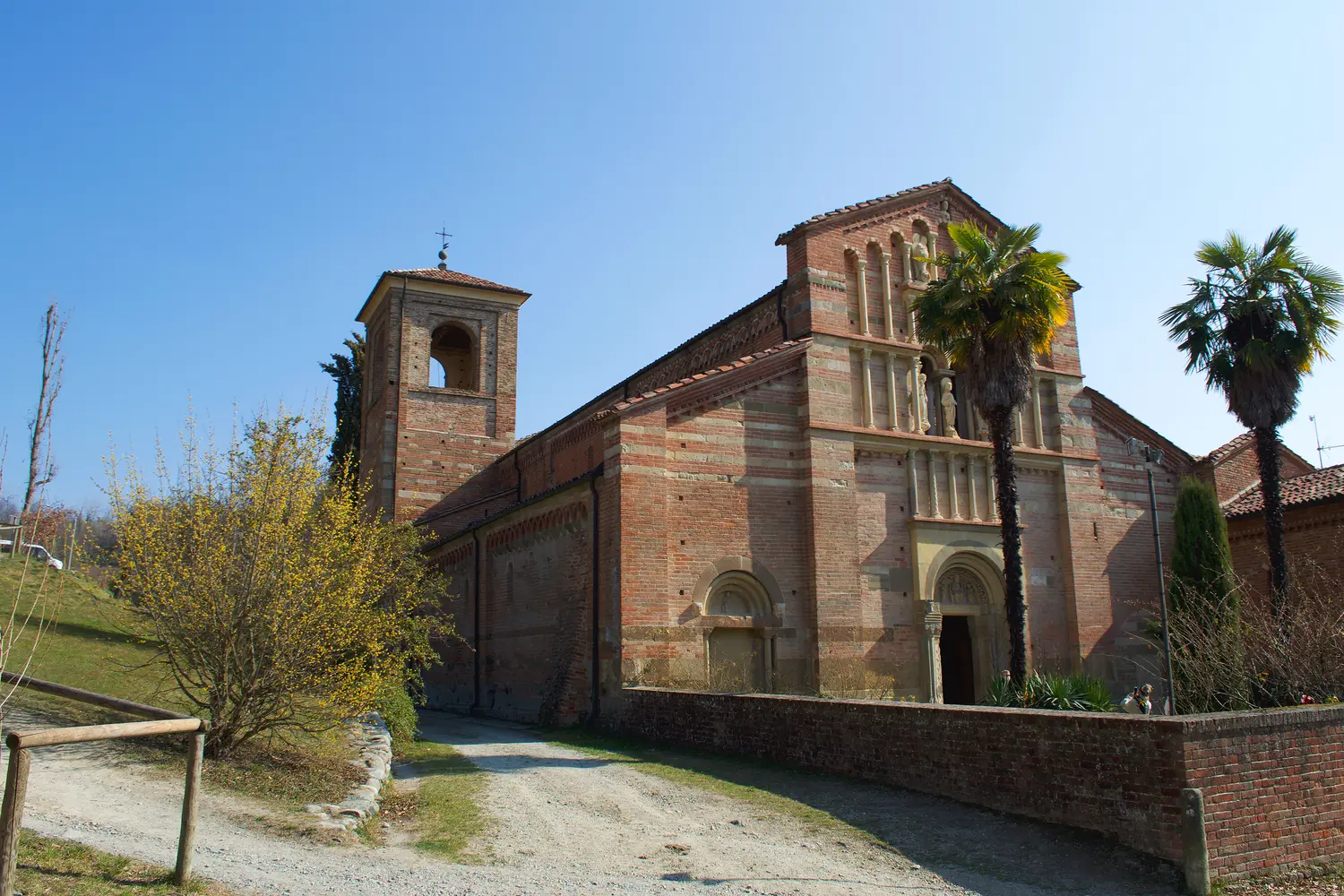
The Territory and the Intervention of the Department of Design
Albugnano is a village of about 500 inhabitants located in Basso Monferrato, Piedmont, between the cities of Turin, Alessandria, and Asti. The area is a mix of hills and plains, characterized by vineyards and rice fields, castles and villages, with a very high potential that is often underutilized.
This area boasts a significant historical and cultural heritage from the Romanesque period, with a high concentration of churches and chapels, such as the Abbey of Santa Maria di Vezzolano, which is part of “TRANSROMANICA,” one of the Cultural Routes of the Council of Europe. The territory's predominance of green, non-urbanized areas is complemented by cultivated fields and vineyards. The viticulture sector is one of the driving forces of the complementary gastronomic sector and typical products, as well as an influential resource for the development of the commercial and tourism sectors. Proximity to urban centers is seen as an opportunity: it encourages local communities to improve the quality of life through the provision of metropolitan services and attracts tourists thanks to its varied historical, religious, cultural, natural, and gastronomic heritage.
The territory has thus been a fertile ground for the participatory design of future scenarios and project solutions to support the area:
- in developing a network of local stakeholders and involving civil society in co-creation processes, strengthening social inclusion.
- in regenerating the area by increasing services for cultural and tourism promotion.
- in promoting the richness of the historical, cultural, and territorial heritage.
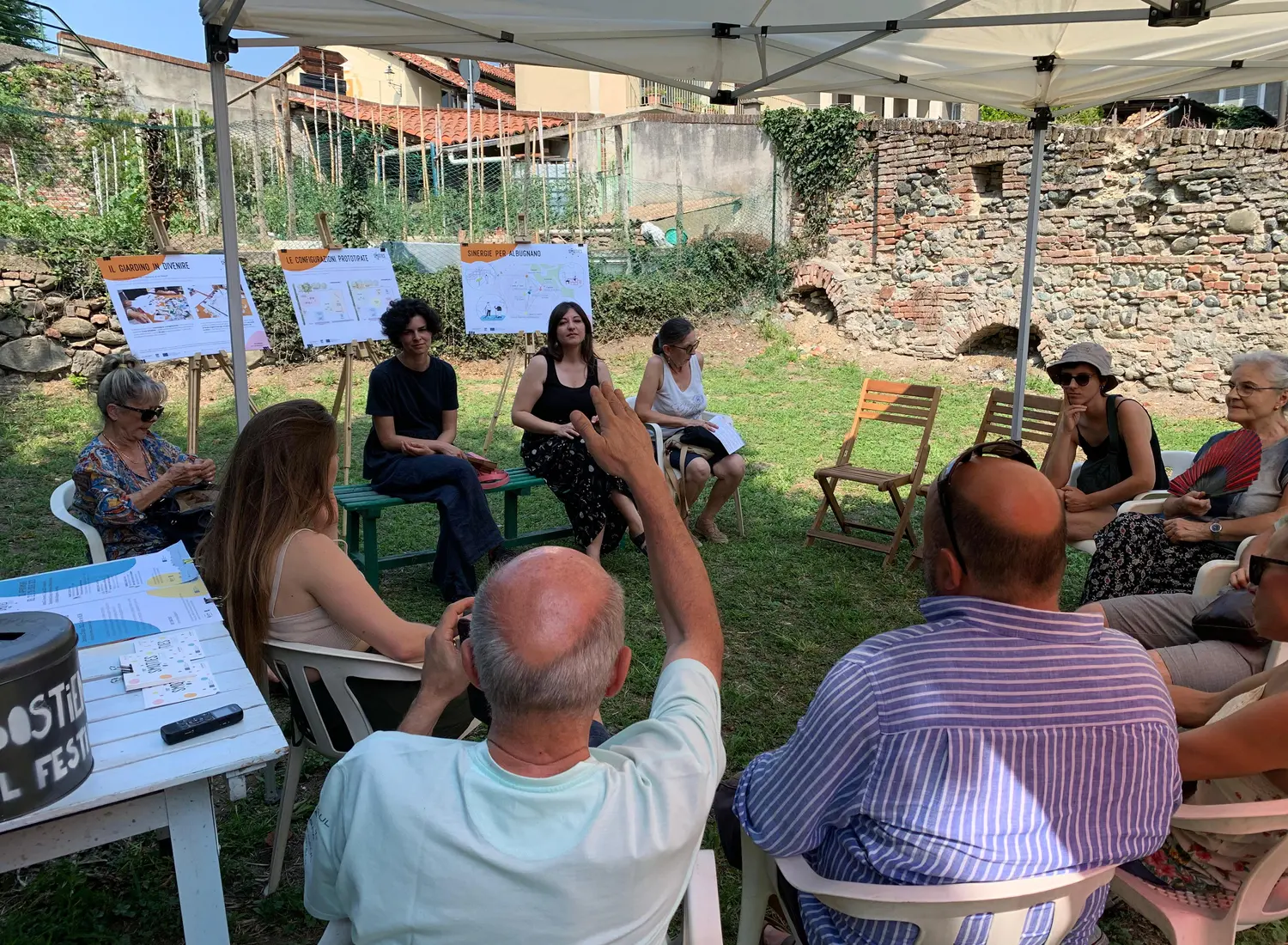
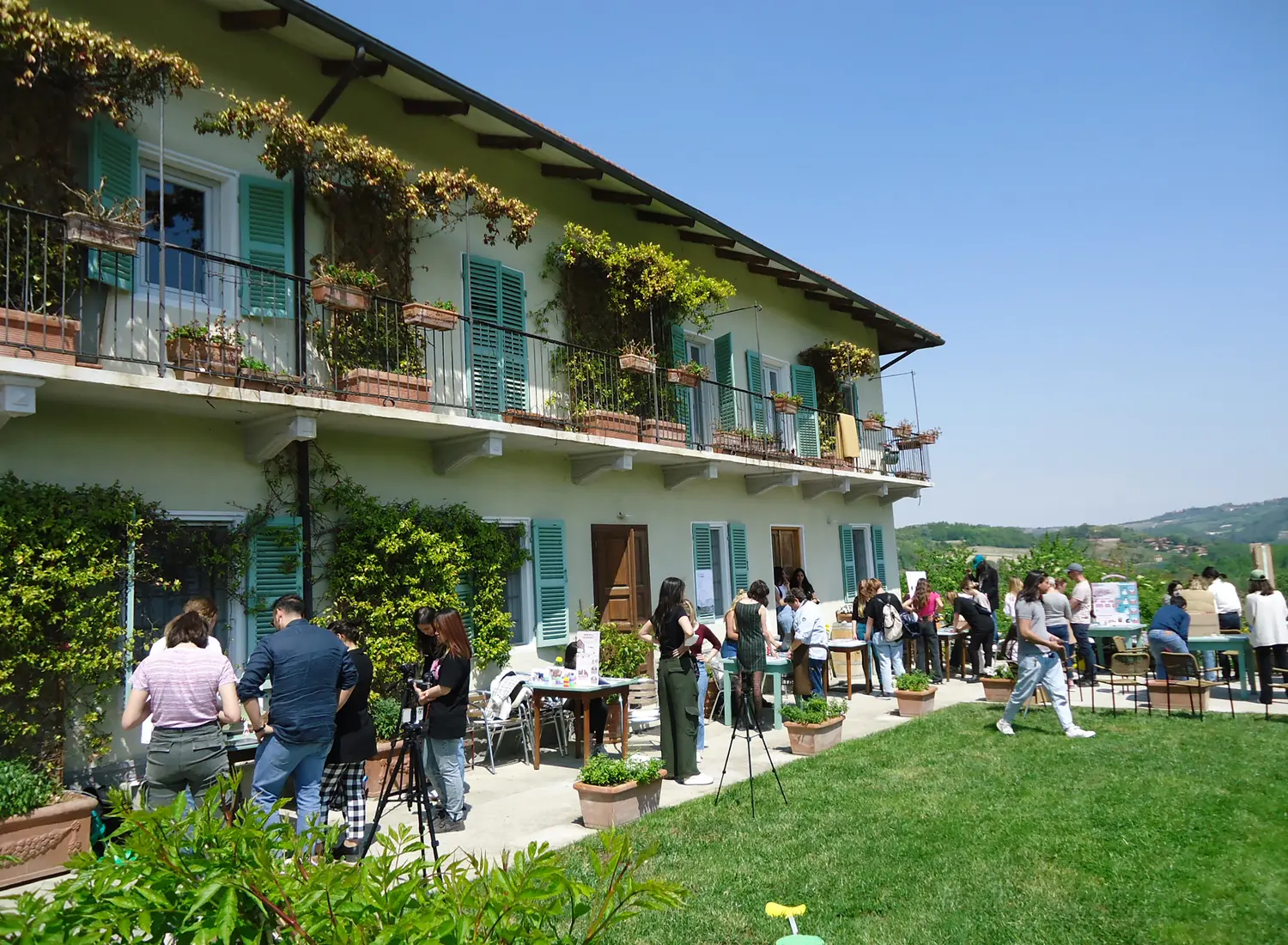
At the end of the research and co-design activities carried out in Albugnano over the four years of the project, the Department of Design has implemented a series of project interventions across a network of 8 key locations in the village of Albugnano.
The project "Citofonare Albugnano" stems from ideas developed together with the local community and aims to enhance local memory and regenerate shared spaces, thereby promoting the cultural, creative, and culinary excellences of the area and fostering participation in local community life.
The design strategy is realized through a system of interventions in the public spaces of the area, using lightweight structures and urban furnishings that enhance existing activities and uses, and stimulate the creation of new initiatives and uses of shared space. The distributed interventions aim to create synergy among Piazza Cavalier Serra, Giardino di via Roma, Biblioteca Comunale, Belvedere Motta, Pro Loco, the Regional Wine Shop of Albugnano, and the Ancient Canonica, making these spaces accessible for both organized and spontaneous activities. Through elements of signage, a narrative of local stories and collected memories voiced by the community over these months is created.
In detail, the communication panels – whose graphic design reflects the key colors of the area – include: a map guiding visitors to all locations on the itinerary; key information for using and accessing spaces, opening hours, contact details, and QR codes linking to the Municipality's website for additional information; historical data and photographs; stories and anecdotes from citizens related to their memories in these places, along with interesting facts. Community bulletin boards, useful for displaying posters and promotional material for local events, complete the project.
The most ambitious intervention is planned for the garden on via Roma, where by the end of the project, scheduled for October 2024, terracing will be built to create an agora dedicated to performances and activities organized by the local community.
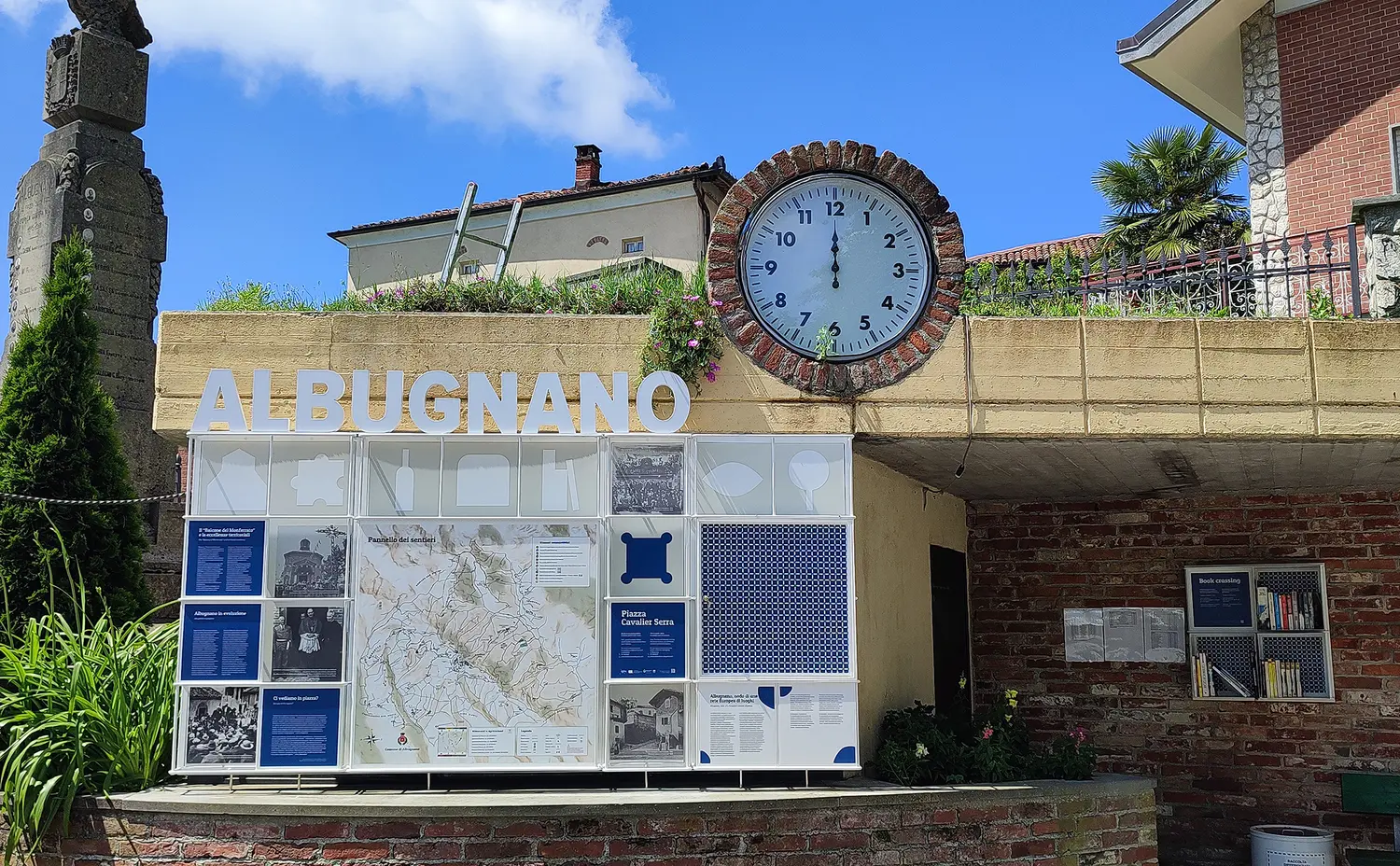
In addition to the signage system, there is a tactical urbanism intervention in Piazza Cavalier Serra. The pavement has been colored with a design composed of a series of icons and colors representing the 8 locations covered by this communication system for Albugnano, which can then be traced in the distributed panel system. To enhance the pedestrian area, movable furnishings have also been added to the square.
In July 2024, on the occasion of the local annual event QUADILA Festival, several events are planned where attendees can enjoy the renewed spaces for activities such as theatrical performances, meetings with the community, and welcoming visitors.
Finally, at the end of the project, there will be a major event in Milan on Wednesday, October 23, in the afternoon, at Aula Magna in Piazza Leonardo da Vinci 32. During this occasion, researchers from the Department of Design will present the project from its initial phases in 2020 to the final results and the impact achieved, intertwining these outcomes with the other 9 projects in remote European locations of the project partners.
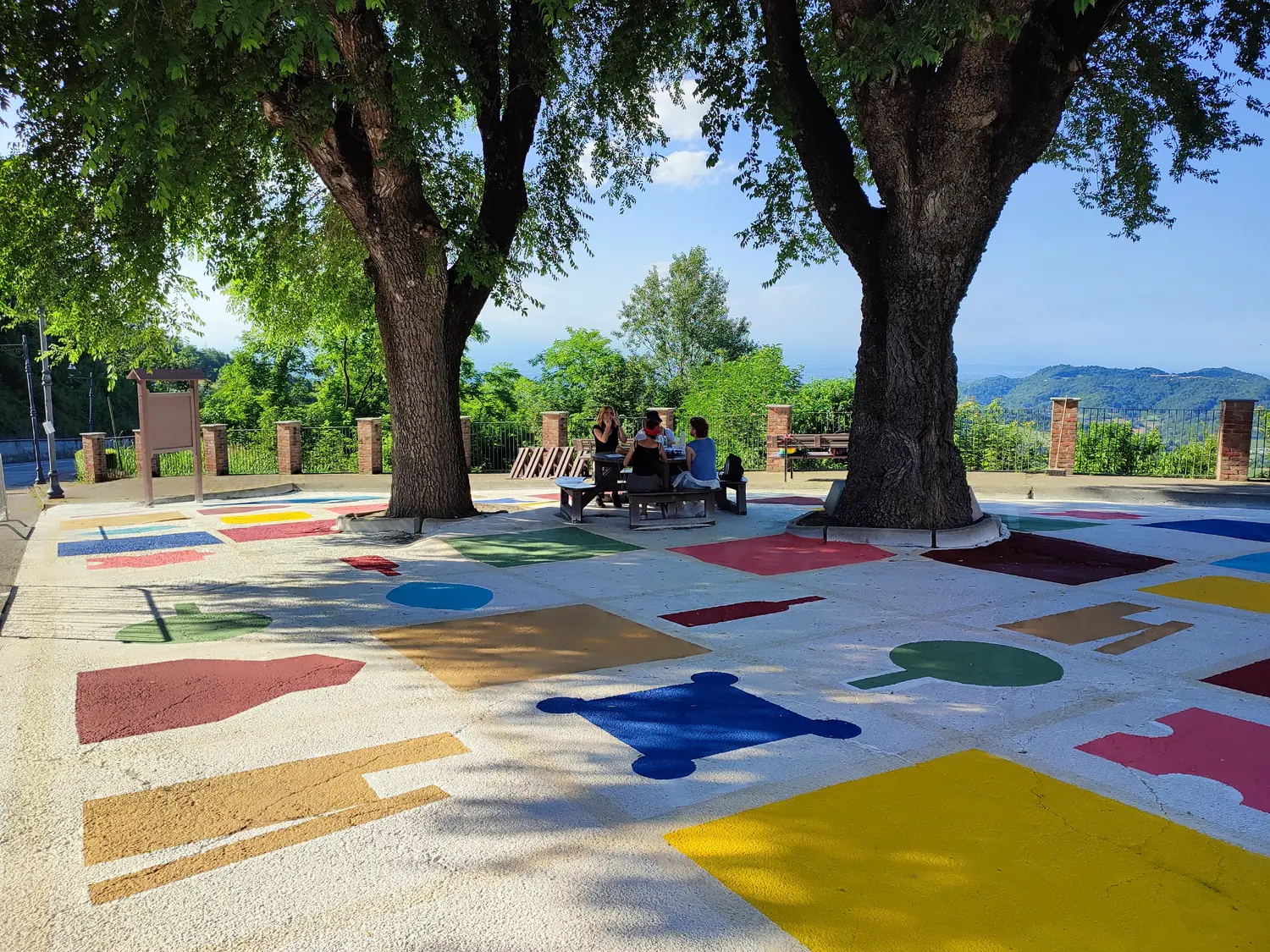
The POLIMI DESIS Lab is composed of a group of researchers who adopt a strategic and systemic approach to design, with a specific focus on service design and design activism. Operating in multicultural and multidisciplinary contexts, the lab integrates various skills in systemic projects that require contributions from service design, strategic design, user-centered design, interaction design, product design, interior/spatial design, design for territory and local development, communication, economics, architecture, planning, and sociology.
The laboratory's goal is to explore how design can enable individuals, communities, businesses, and social actors to activate and manage innovation processes aimed at experimenting with sustainable and collaborative ways of living and working.